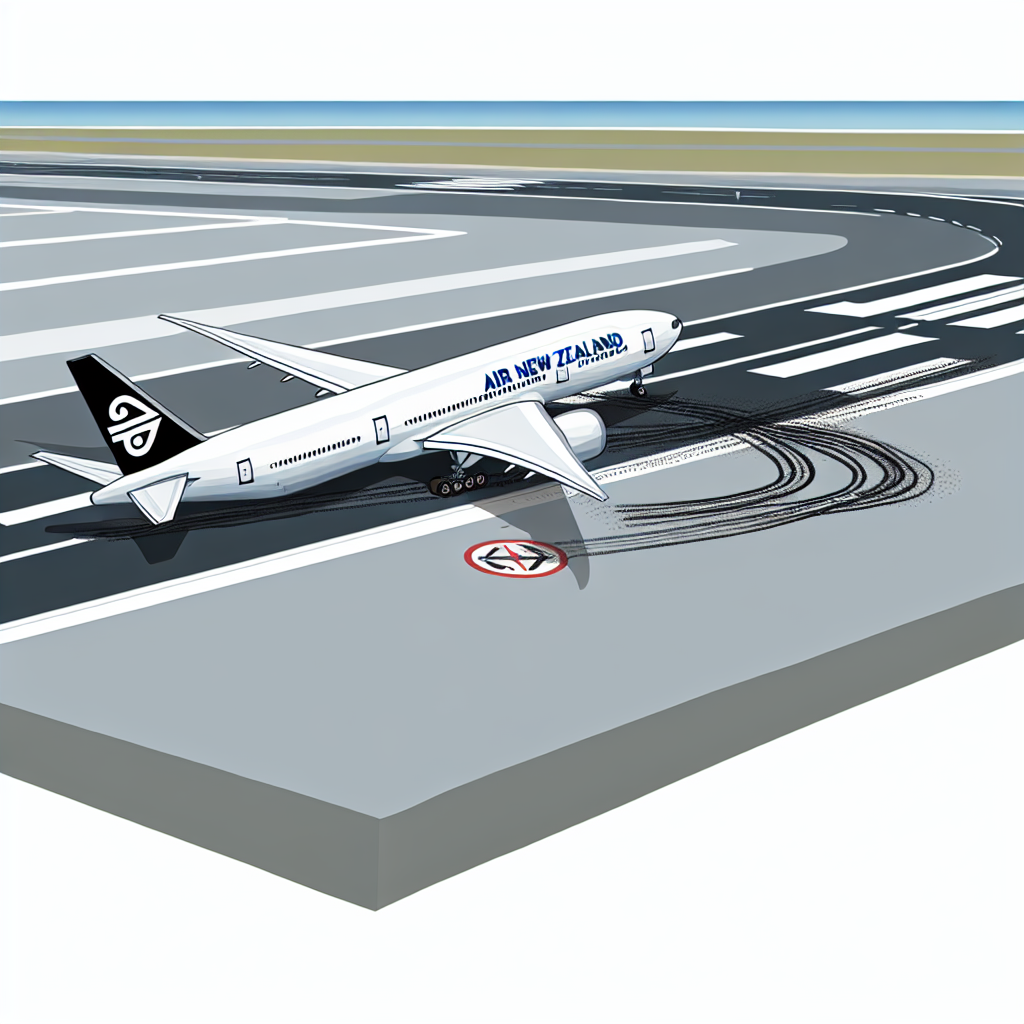AUCKLAND- The Transport Accident Investigation Commission of New Zealand has concluded that pilot error led to an Air New Zealand (NZ) Boeing 777-300ER veering off the runway and colliding with several runway edge lights upon landing at Auckland International Airport (AKL).
The investigation revealed that the captain failed to adequately adjust for the aircraft’s control system response after disengaging the autopilot too late during the approach sequence.
The Air New Zealand (NZ) twinjet was operating from Melbourne (MEL) and arrived at Auckland (AKL) on January 27, 2023, carrying 271 passengers and 16 crew members.
The aircraft executed an ILS/DME approach to runway 05R amidst challenging weather conditions, including heavy rain and fluctuating crosswinds.
These changing crosswind conditions complicated the landing process, requiring precise adjustments during the approach.
The Boeing 777’s autopilot system maintained alignment with the runway throughout the approach, automatically compensating for crosswind conditions.
At 500 feet above the ground, the autopilot began applying left aileron and right rudder inputs to counteract the left crosswind and maintain alignment with the runway centerline.
The autopilot continued to make necessary corrections, successfully keeping the aircraft aligned with the runway while maintaining the target approach speed.

Timing Error
According to Air New Zealand’s standard operating procedures, pilots are advised to disengage the autopilot between 300 and 600 feet above ground level. This practice is intended to allow pilots adequate time to take manual control before initiating the landing flare maneuver.
However, the captain diverged from this protocol and kept the autopilot engaged until the aircraft was just 67 feet above the ground.
By the time the autopilot was disengaged, the aircraft had already crossed the runway threshold.
The timeline of the investigation indicates a rapid succession of critical actions following the disengagement of the autopilot.
The crew initiated thrust lever retardation to idle power only one second after deactivating the autopilot.
The landing flare commenced 3 seconds following autopilot disengagement, leaving very little time for the pilot to establish proper manual control of the aircraft.
Pilot Input Faults
The Transport Accident Investigation Commission highlighted a significant system behavior that led to the incident. When the autopilot’s runway-alignment mode is disengaged, it automatically returns flight controls to their neutral positions.
Investigators stressed that pilots are responsible for maintaining the control inputs that the autopilot had been using to keep the flight path steady. Analysis of the flight data recorder showed that the pilot did not maintain the left aileron input necessary to counter the crosswind conditions that the autopilot had been managing.
Loss of Control
The inability to sustain the correct control inputs resulted in the Boeing 777 rolling 3.69 degrees to the right and drifting away from the centerline of the runway. During this critical phase, the crosswind conditions continued to vary, characterized by decreasing wind speed and an even greater leftward shift in wind direction.
The investigation concluded that the pilot struggled to counteract the combined effects of the aircraft’s roll to the right and the shifting crosswind conditions within such a limited time frame.
Damage Assessment
The aircraft made contact with the ground just 9 seconds after the autopilot was turned off, immediately veering off the runway and onto the sealed shoulder area.
The Boeing 777 struck six runway edge lights before the crew was able to regain control and realign the aircraft with the runway centerline.
The investigation determined that this excursion was “virtually certain” based on the sequence of actions taken, regardless of the conditions of the runway surface. Although the runway was wet from rain, investigators noted the absence of standing water that would have contributed to the incident.
Safety Outcome and Aircraft Damage
All 271 passengers and 16 crew members were unharmed during the runway excursion incident. However, the Boeing 777 did sustain considerable damage to its landing gear systems.
Five of the six right main landing gear tires were damaged, with the rear inboard tire fully deflated.
Further damage was inflicted upon the right brake assembly and associated wiring harness, necessitating extensive repairs before the aircraft could be returned to operational service.
Stay connected for more updates. Additionally, follow us on social media for the latest information.
Join us on Telegram Group for the Latest Aviation Updates. You can also follow us on Google News
Based on an article from aviationa2z.com: https://aviationa2z.com/index.php/2025/05/31/air-new-zealand-777-veered-off-the-runway-amid-pilot-error/?utm_source=rss&utm_medium=rss&utm_campaign=air-new-zealand-777-veered-off-the-runway-amid-pilot-error



